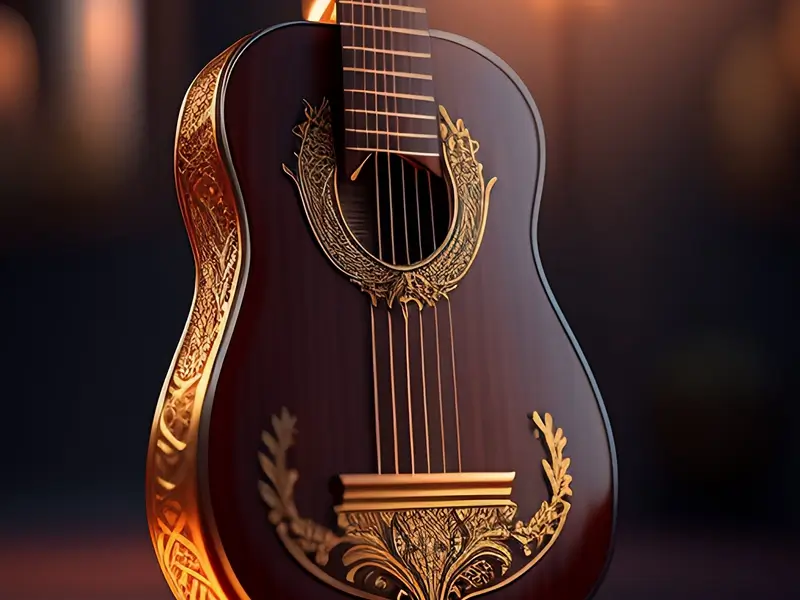Guitar Strings: Deep Explaination For Right Choice
Guitar Strings: Don’t Make a Wrong Choice
The importance of guitar strings is obvious. Therefore, to use right strings for right guitars will greatly help to improve and perform the sound that expected.
Generally, there are steel strings for acoustic guitars and nylon strings for classical guitars. What is the difference between the two types of strings? Why we don’t recommend to mixed use the two types strings?
There are brands of strings. They have different properties and gauges, even models among the same brand. Material, technology of production, gauge, etc. is different mainly for the purpose of strings is different. We try to explain as specific as we can.
Go through this article, we hope to make you more clear about strings to help to make correct choice.
Acoustic Strings VS Classical Nylon Strings
Acoustic strings refer to the steel strings used on acoustic guitars.
As a common sense, acoustic guitar (folk guitar, country guitar, etc.) usually for the performance of multiple music style like folk, country, blues, rock, etc. The strings must be strong to get a high tension to properly perform the expected tone. The neck and bracing system of the top is designed to bear that tension.
Classical guitar was born for playing classical chords. The nylon string was invented to replace gut string to play gentle and soft tone compared with acoustic guitar (you may be interested in the article Classical VS Acoustic Guitar: Make Right Choice). Therefore, the string won’t bear as high tension as acoustic type. The bracing system of top, the neck design, etc. is also vary from acoustic type.
From above, we know that the material of acoustic strings and classical strings is different at least. And the level of tension that the strings bear is different. Although there are many said that they often interchange the strings of acoustic and classical guitar, you should be very careful about this kind of talking.
The reason is simple. Using nylon string on the acoustic guitar may not cause a serious damage, however, it is very hard to get the expected tonal performance. With steel strings, there will be a serious damage on the classical guitar beside the influences of tonal performance.
Acoustic Guitar Steel Strings: Gauges & Guidance of Purchasing
Before we dive into the steel strings of acoustic guitars, there is one of properties of the strings that need to be made clear. The gauge which is the measurement of thickness of the string, commonly described as light, heavy, etc. This property is also the most important index to guide the purchasing.
Although the exact gauge may vary among the manufacturers, following are typical gauge ranges. And remember that the gauge is designated in thousandths of an inch.
- EXTRA LIGHT: .010 .014 .023 .030 .039 .047
- CUSTOM LIGHT: .011 .015 .023 .032 .042 .052
- LIGHT: .012 .016 .025 .032 .042 .054
- MEDIUM: .013 .017 .026 .035 .045 .056
- HEAVY: .014 .018 .027 .039 .049 .059
Here is another question follows: which gauge should be used? There are aspects that need to be considered before making the choice.
Generally, the bigger of the body, the heavier gauge of the string. D-body and jumbo guitar performs better with medium gauge. GA and smaller body guitar will be better with lighter gauge.
Another rule is the gentler you are playing, the lighter the gauge should be used like fingerstyle. For hard strumming performance, heavier gauge like medium should be the first consideration. If mixed style is involved, mixed gauge string set is recommended. That means the top three strings are with lighter gauge and the bottom three are with heavier gauge.
Now, you may have an idea that what kind of tone you can expect from different gauge of strings. In a short word, heavier gauge plays deep and strong tones. Lighter gauge strings are good at playing treble notes.

Material of Acoustic Guitar Strings
Although the strings of acoustic guitar are called steel strings in common, they are actually made of various metal material. Knowing what are the material and the properties may also help you make right choice.
Strings made of bronze may be common on the market. This type of strings has clear, ringing and bright tone. But can be fast aged due to bronze’s tendency to oxidize.
Phosphor bronze has similar tone performance with bronze strings. But the life is longer because of add the phosphor into the alloy.
Compared with phosphor bronze strings, aluminum bronze plays more clear bass and treble tone.
Brass strings are popular nowadays. Mainly because the strings help to play tones with bright, jangling and metallic character.
Polymer coated strings are preferred by more and more players, mainly because of high anti-corrosion ability of the strings.
Silk-steel are the strings made by steel core with silk, nylon or copper wrap wire. Very popular among fingerstyle players and folk guitarists.
Characteristics of Classical Guitar Nylon Strings
Nylon strings are generally to play classical, flamenco and folk music, etc. Many believe that it is easier to play with nylon strings, especially for beginners. But they will experience some tenderness in their fingertips in a short time. This is mainly related with the tension of the strings. And in our opinion, nylon strings should be selected according to the music style you are going to play, instead of the ease of playing.
Classical guitar strings are commonly described as tension at level of low, normal and high. Unlike acoustic steel strings, there is no clear standard of gauge on nylon strings. And the feeling of the tension may be varied from one brand to another. Probably, the best way to find out which fits you the best is to try them on your guitar. However, here we are still glad to introduce general properties of different tension of nylon strings.
Low tension is also called Moderate or Light Tension sometimes. Performs easier fretting, especially on guitars with a higher action. Provide less volume and projection, but greater tendency to cause buzzing on frets. This type of the strings is commonly used on models for beginners.
Normal tension or medium tension has great balance of characteristics of low- and high-tension strings. Thus, this kind of strings is the most commonly used.
High tension, also known as hard or strong tension strings are more difficult to fret. Provide more volume and projection. Also, the best choice for rhythmic playing. However, high tension strings usually cause issues with necks, bridges and top, especially on fragile instruments. Therefore, this type of strings is frequently used on real high quality or high-end guitars. Not everyone loves the performance of high-tension strings, but they are preferred by professionals.

Nylon String Materials
Well, the name of nylon string is a kind of misleading. Because the modern nylon strings are actually made of combination of different materials. For treble strings of G, B and high E, plain nylon, fluorocarbon or other synthetic filaments are used. For bass strings of E, A and D, they usually made of nylon cores wrapped with various metals or nylon windings.
Different material has different tonal characteristics.
Treble strings with clear nylon are the most popular type because of its richness and clarity.
Rectified nylon strings’ diameter is consistent along the entire length. Compared with clear nylon strings, they provide mellower and rounder tone.
There is also a nylon material that composites different nylon material, known as black nylon. The strings provide warmer, purer sound with more treble overtones. Often be used by folk guitarists.
Alright, let’s move to classical bass strings (E, A and D). As mentioned, the strings are made of nylon core wrapped with various metals. There are two main winding material as following.
80/20 BRONZE: The composition contains 80% copper and 20% zinc, sometimes known as brass. Provide brilliance and projection. Also be called “gold “strings.
Silver-plated COPPER: Silver plating provide smooth feeling and the reason of the name of “silver” strings. Warm tonal performance.
Brands of Strings We are Using
For classical guitars, there are three brands that frequently be equipped on the guitars we represented or customized. Savarez, Knobloch and RC. For different designation, purpose of guitar and budget or marketing situation, etc., we choose proper tension to use.
For acoustic guitars, the most frequently used brand is D’addario which is the world-class brand. Since there are guitars for beginners to learn, practicing for progress, performing level for performance, etc., we choose different gauge on different guitars.
We are not the string manufacturer, thus, customization for strings may be troublesome. Mainly because of MOQ limitation by the manufacturers. However, the requirement of other brands or gauges is acceptable. Please feel free to CONTACT for fast consultation.










